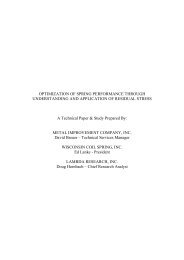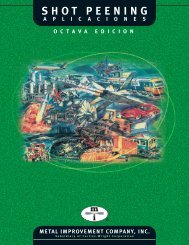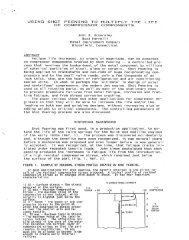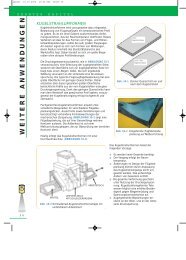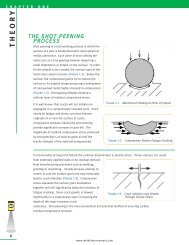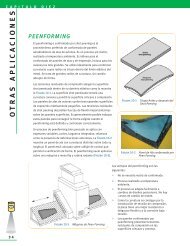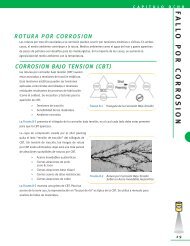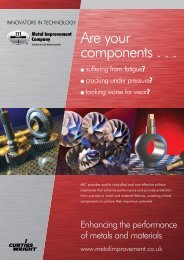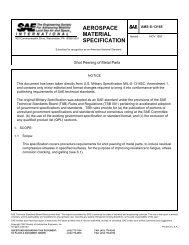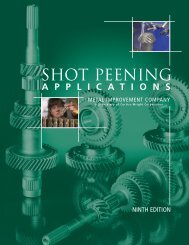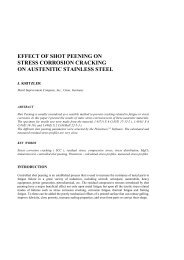shot peening residual stress - Metal Improvement Company
shot peening residual stress - Metal Improvement Company
shot peening residual stress - Metal Improvement Company
You also want an ePaper? Increase the reach of your titles
YUMPU automatically turns print PDFs into web optimized ePapers that Google loves.
C H A P T E R T E N<br />
O THER APPL ICA T IONS<br />
36<br />
S M<br />
P E E N T E X<br />
Controlled <strong>shot</strong> <strong>peening</strong> can also be used to deliver a number of<br />
different, aesthetically pleasing surface finishes. <strong>Metal</strong><br />
<strong>Improvement</strong> Co. stocks a great variety of media types and sizes.<br />
These media ranges from fine glass to large steel (and stainless<br />
steel) balls. Using a carefully controlled process, MIC is able to<br />
provide architectural finishes that are consistent, repeatable and<br />
more resistant to mechanical damage through work hardening.<br />
Shot <strong>peening</strong> finishes have been used to texture statues, handrails,<br />
gateway entrances, building facades, decorative ironwork, and<br />
numerous other applications for visual appeal. When selecting a<br />
decorative finish, MIC recommends sampling with several finishes<br />
for visual comparison. Figure 10-5 is a hand rail utilizing a chosen<br />
Peentexsm finish (left side of Figure 10-5) to dull the glare from the Figure 10-5 Before (right) and<br />
untextured finish (right side).<br />
A textured surface is able to hide surface scratches and flaws that<br />
After (left) Comparison<br />
of Peentex<br />
would otherwise be highly visible in a machined or ground surface. It is common to texture molds used for<br />
making plastics to hide surface defects. The texture on the mold surface will become a mirror image on the<br />
plastic part’s surface.<br />
sm<br />
E N G INEERED S U R F A C E S<br />
Engineered Surfaces are those that are textured to enhance surface performance. The following are<br />
potential surface applications achieved through <strong>shot</strong> <strong>peening</strong>.<br />
• In most cases a textured surface has a lower coefficient of (sliding) friction than<br />
a non-textured surface. This is because the surface contact area is reduced to<br />
the "peaks" of the <strong>shot</strong> <strong>peening</strong> dimples.<br />
• In some applications the "valleys" of the <strong>peening</strong> dimples offer lubricant<br />
retention that are not present in a smooth surface.<br />
• In some instances a non-directional textured surface is desired over a unidirectional<br />
machined/ground surface. This has proven effective in certain<br />
sealing applications<br />
• In certain mold applications, a textured surface has less vacuum effect resulting<br />
in desirable "release" properties.<br />
www.metalimprovement.com



